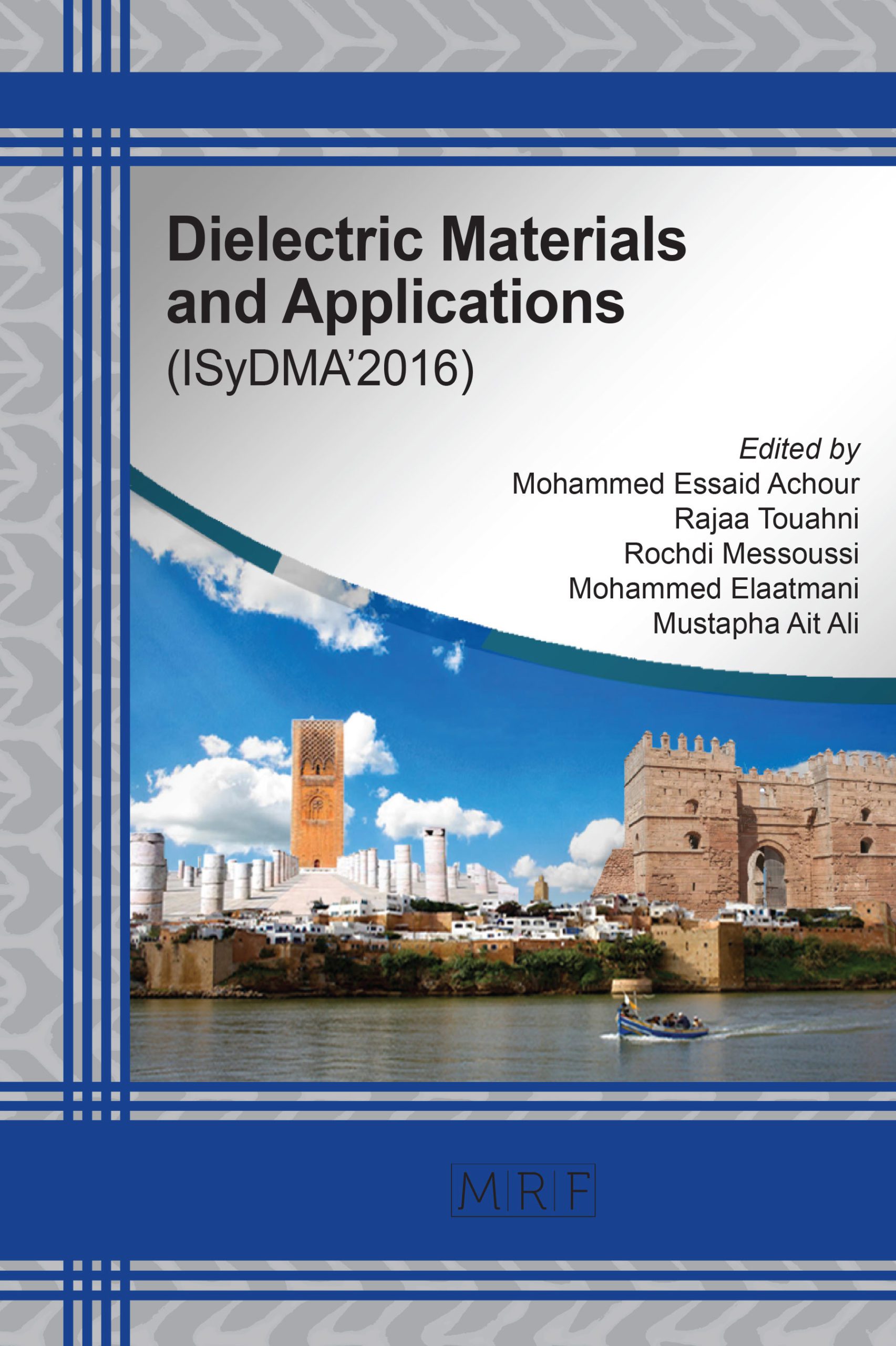A. EL BACHIRI, M. EL HASNAOUI, F. BENNANI
Abstract. Ceramic material sample of Li0.867Nb0.988Ni0.098O3 was prepared by solid-state reaction method and their impedance spectra were measured in the frequency range from 1Hz to 10MHz and temperature range from 400 to 800°C. The obtained data were analyzed by means of electric impedance formalism. Two dielectric relaxation processes were revealed in the frequency range and temperature interval of the measurements. One of these relaxations appearing in law frequencies was associated with grain boundaries and/or the interfacial polarization. Whereas the other appearing at high frequencies is consistent with the grain effect.
Keywords
Ceramic Material, Solid-State, Dielectric Relaxation, Impedance Spectroscopy
Published online 12/10/2016, 4 pages
Copyright © 2016 by the author(s)
Published under license by Materials Research Forum LLC., Millersville PA, USA
Citation: A. EL BACHIRI, M. EL HASNAOUI, F. BENNANI, ‘Low-frequency dispersion behavior of impedance spectra of Li0.867Nb0.988Ni0.098O3 ceramic’, Materials Research Proceedings, Vol. 1, pp 284-287, 2016
DOI: http://dx.doi.org/10.21741/9781945291197-70
The article was published as article 70 of the book Dielectric Materials and Applications
References
[1] A. Dhar, N. Singh, R. K. Singh, J.Phys Chem Solids, 74, 146-151(2013). http://dx.doi.org/10.1016/j.jpcs.2012.08.011
[2] V. Tatyana, W. Manfred, “Lithium Niobate Defect Photorefraction and Ferroelectric Switching”, 1th ed, Springer, Berlin ( 2008).
[3] R. Mouras, M. D. Fontana, P. Bourson, and A. V. Postnikov, J Phys. Condens Matter 12, 5053-5059 (2000). http://dx.doi.org/10.1088/0953-8984/12/23/313
[4] D. A. Bryan, R. Gerson, and H. E. Tomaschke, Appl Phys Lett, 44, 847-849 (1984). http://dx.doi.org/10.1063/1.94946
[5] Y. Xi, H. McKinstry, and L. E. Cross, J. Am Ceram Soc. 66, 637-644 (1983). http://dx.doi.org/10.1111/j.1151-2916.1983.tb10612.x
[6] S. C. Bhatt and B. S. Semwall, Solid State Ionics 23, 77-80 (1987). http://dx.doi.org/10.1016/0167-2738(87)90084-1
[7] A. El-Bachiri, F. Bennani and M. Bousselamti, Spectrosc. Lett., 47, 374–380(2014). http://dx.doi.org/10.1080/00387010.2013.857356
[8] N. Hirose and A. R. West, J. Am. Ceram. Soc, 79, 1633-1641 (1996). http://dx.doi.org/10.1111/j.1151-2916.1996.tb08775.x
[9] F. Bennani and E. Husson, J. Eur. Ceram. Soc, 21, 847–854 (2001). http://dx.doi.org/10.1016/S0955-2219(00)00285-5
[10] I. Bhaumik, S. Ganesamoorthy, R. Bhatt, A. K. Karnal, V. K. Wadhawan, P. K. Gupta, S. Kumaragurubaran, K. Kitamura, S. Takekawa, and M. Nakamura, J Appl Phy 103, 074106 (2008). http://dx.doi.org/10.1063/1.2903907
[11] J.R. Macdonald, Solid State Ionics 13, 147 (1984).
http://dx.doi.org/10.1016/0167-2738(84)90049-3
[12] P. Kumari, R. Rai, A.L. Kholkin, J Alloys and Cmopd 637, 203–212 (2015). http://dx.doi.org/10.1016/j.jallcom.2015.02.149































